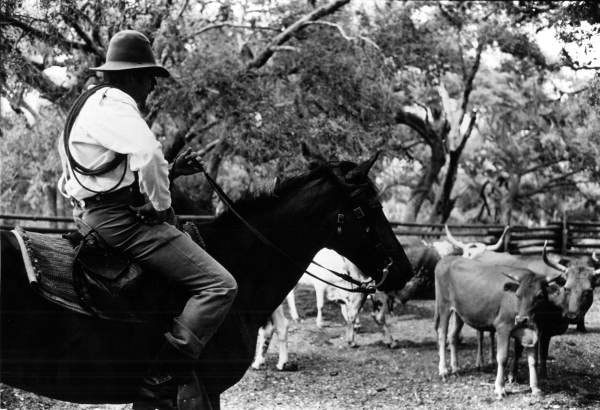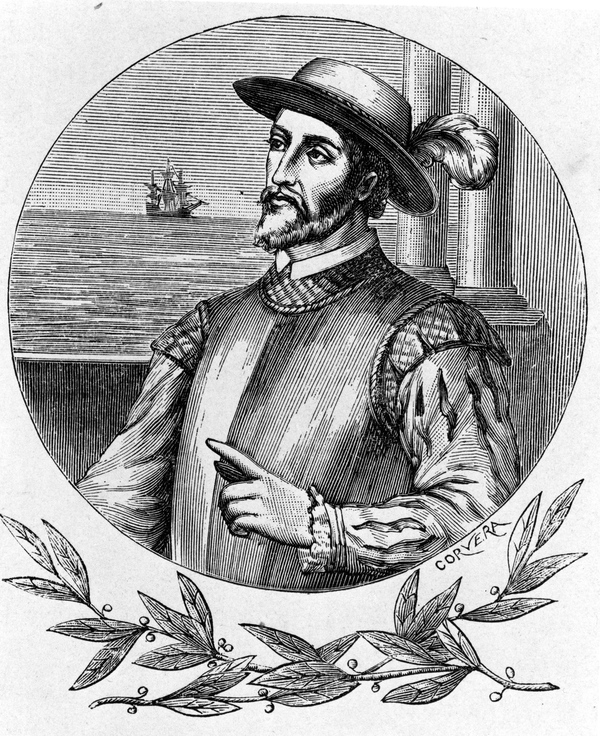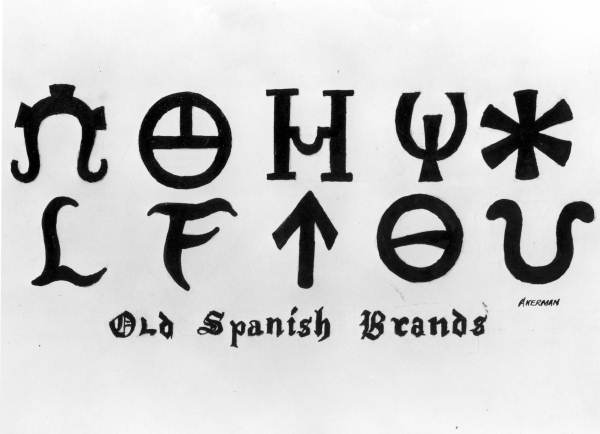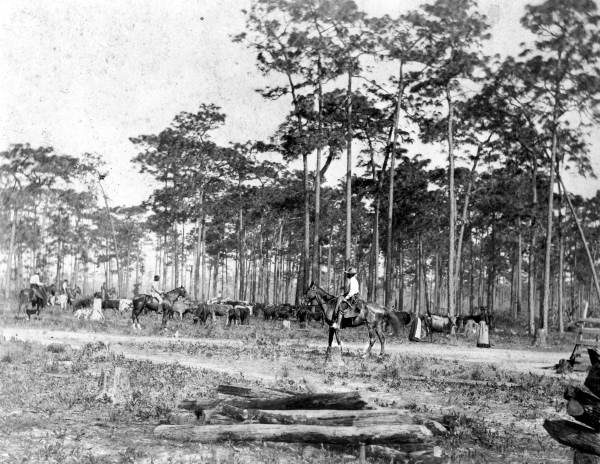Description of previous item
Description of next item
Spanish Cattle in Florida
Published September 9, 2014 by Florida Memory
There are several obvious places to look for signs of Florida’s Spanish heritage. Place names like Santa Rosa Island, Cape San Blas, and Boca Raton are hard to miss. Then there’s Saint Augustine, home to the Castillo de San Marcos and the nation’s oldest Catholic parish.
These are great places to visit, but there’s no need to travel so far to find living traces of Florida’s colonial Spanish era. Often, a nearby cow pasture will do the trick.
Florida scrub cattle, or Cracker cows, are often associated with the U.S. settlers who began tending them in the 19th century. Their origins, however, are Spanish.
When Juan Ponce de Leon arrived on his final mission to Florida in 1521, he brought Spanish Andalusian cattle with him to help provision the growing settlement he hoped to establish on Florida’s Gulf coast. Calusa Indians attacked the would-be Spanish colonists, and they were forced to retreat to Cuba and leave many of their supplies behind.
No records exist to explain just what happened to the cattle, but it’s possible some of them survived and remained in the wild.
If this didn’t get the herd started, the larger Spanish settlement at St. Augustine certainly did. Once the Spaniards established themselves on Florida’s Atlantic coast in 1565, they began expanding their influence outward into the territory through a series of Catholic missions.
Each became a small village, complete with facilities for ministering to Native Americans and for sustaining the Spanish inhabitants. More Andalusian cattle flowed into the area to serve these missions, and Spanish landowners began raising cattle as well.
These cows were unfenced; they wandered at will in the woods to graze until they were rounded up. Brands were used to keep each owner’s cattle separate. The system worked, although years of conflict between the Spanish, Native Americans, and British settlers from the north acted to scatter the herds across the peninsula.
The Spanish hold on Florida began to unravel in the 18th century, and new inhabitants began tending the cattle roaming around the region. Years of free range living had toughened the herds, making them less vulnerable to parasites and better able to tolerate life in areas with less than an ideal food supply.
Native Americans began using the cows as an auxiliary food supply. When U.S. settlers began arriving in the area, they bought (or took) scrub cows to improve their own herds. As the 19th century progressed and the Seminoles were pushed farther south, the herds they had once tended came increasingly under the control of these newcomers.
A variety of other breeds have been introduced into Florida herds in the past two centuries, but the Cracker (or scrub) cattle can still be found on ranches across the state. To the untrained eye, they might not look much different from any other Florida cows, but in reality they’re a testament to Florida’s Spanish heritage.
For more photos of the Florida cattle industry, check out our Cattle Ranching photo exhibit, or search the Florida Photographic Collection.
Cite This Article
Chicago Manual of Style
(17th Edition)Florida Memory. "Spanish Cattle in Florida." Floridiana, 2014. https://www.floridamemory.com/items/show/295223.
MLA
(9th Edition)Florida Memory. "Spanish Cattle in Florida." Floridiana, 2014, https://www.floridamemory.com/items/show/295223. Accessed December 30, 2025.
APA
(7th Edition)Florida Memory. (2014, September 9). Spanish Cattle in Florida. Floridiana. Retrieved from https://www.floridamemory.com/items/show/295223

 Listen: The Bluegrass & Old-Time Program
Listen: The Bluegrass & Old-Time Program


